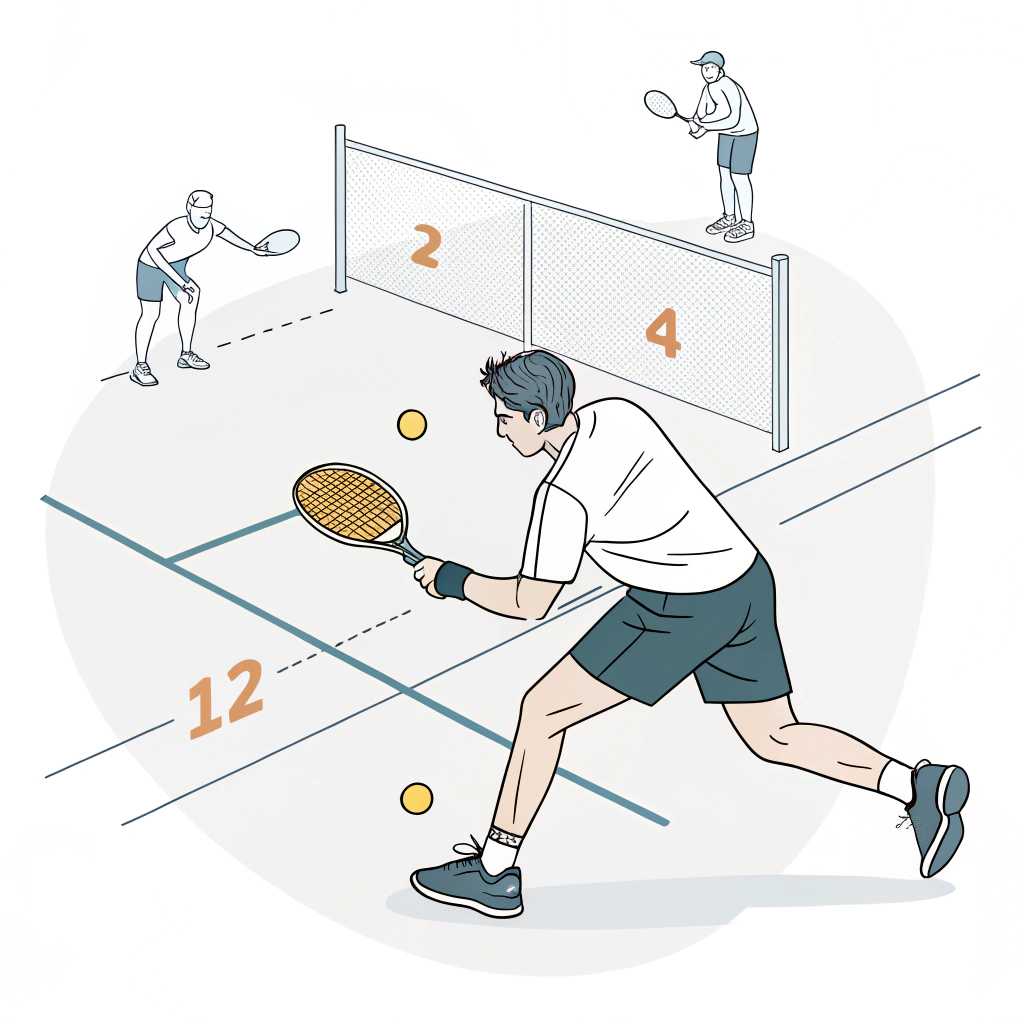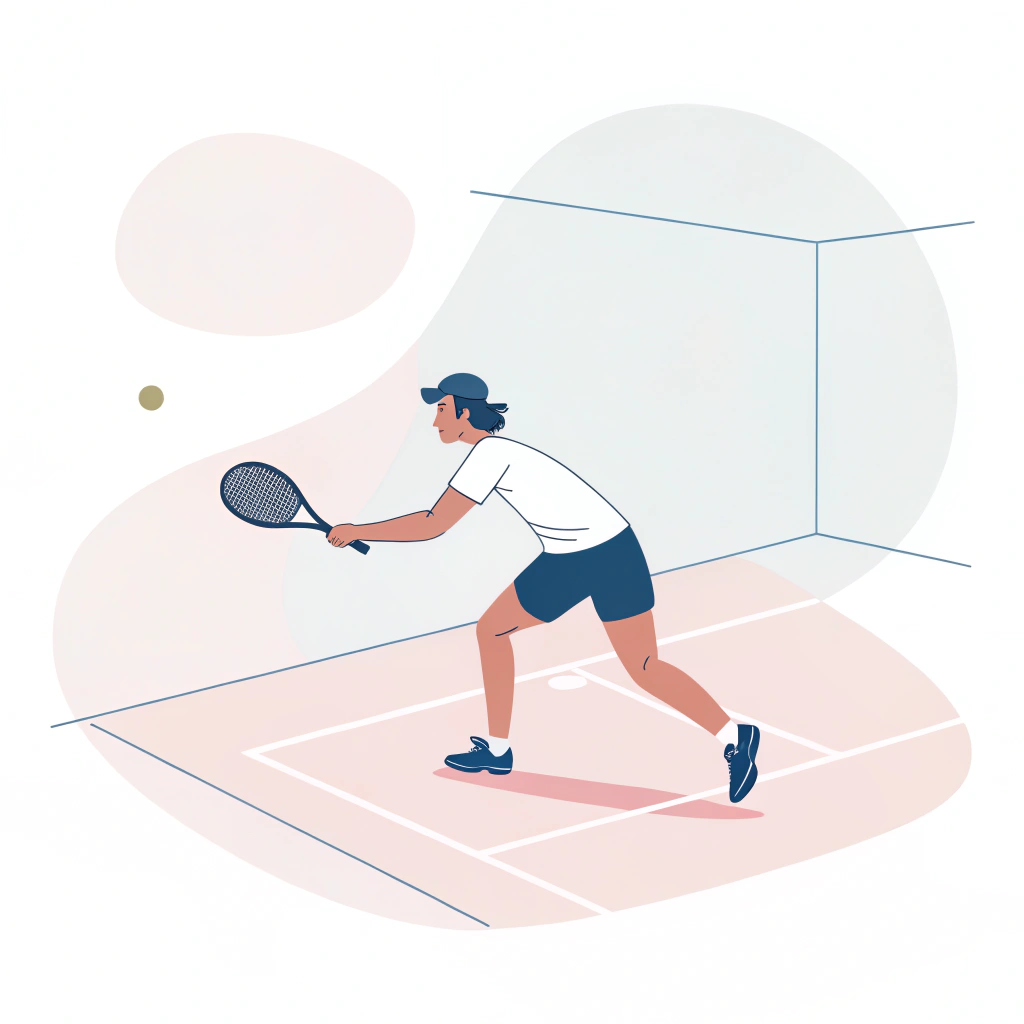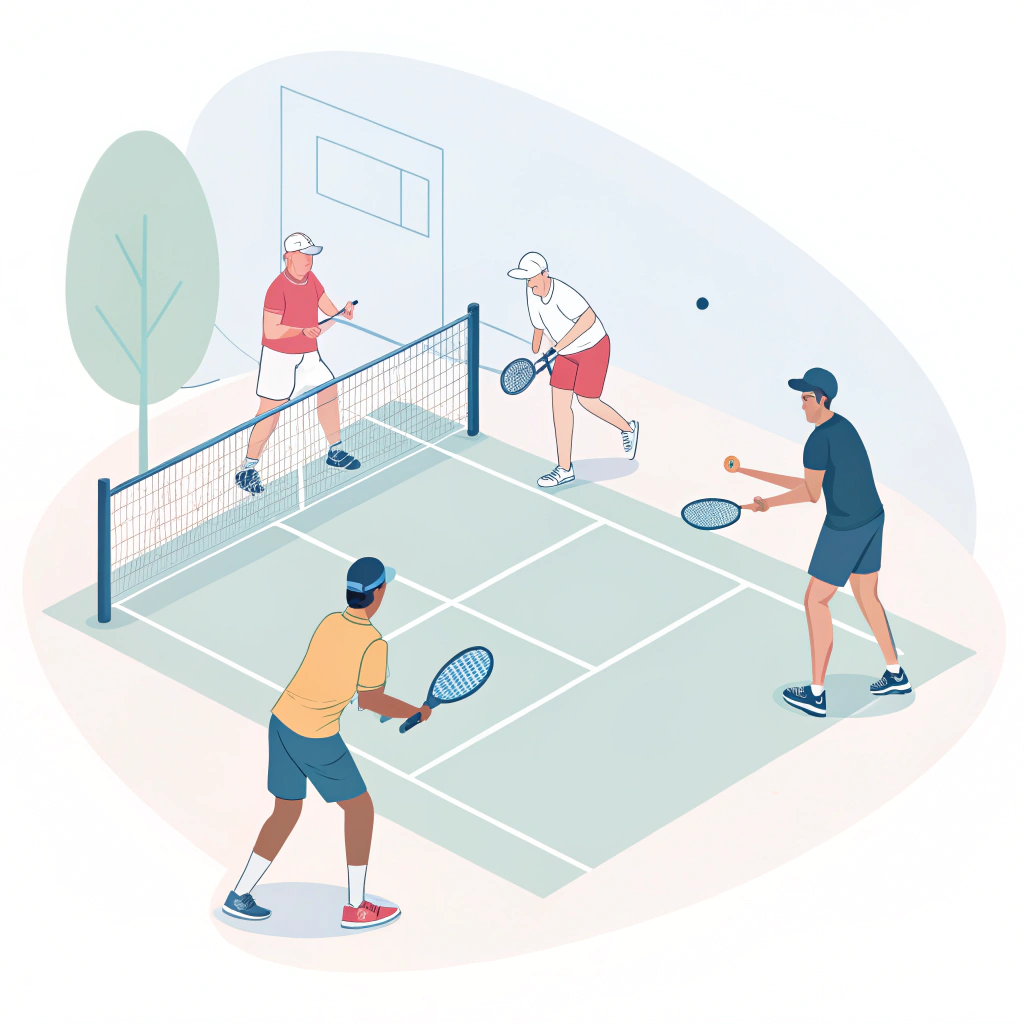Quick Answer: To neutralize a hard serve in pickleball, position yourself 3-5 large steps from the baseline, maintain a low and balanced stance, and combine effective footwork with the right paddle technology1—such as those featuring advanced carbon fiber materials—to ensure quick recovery and strong ball control.
A hard serve in pickleball is a frequent challenge that demands both physical agility and mental alertness. Coaches and training directors often face the task of preparing their teams to counteract serves that generate high speed and spin, using both tactical positioning and effective return techniques. In competitive play, these serves are designed to disrupt timing and throw off a player's optimal positioning. Hence, knowing how to effectively return them is crucial for sustaining a competitive edge.
In this article, we explore actionable training techniques, discuss the importance of modern paddle designs, and break down the elements that contribute to an effective pickleball return2 strategy. Our aim is to equip coaches and high-performance training directors with the insights needed to transform challenging serves into manageable plays.
When facing a hard serve, understanding its components can help in planning a counter-strategy. The difficulty of returning a hard serve primarily lies in three factors:
- Ball Speed and Spin: A high-speed serve, often generated with significant spin, requires a return technique that both absorbs impact and has sufficient follow-through to redirect the ball.
- Player Positioning: Proper positioning is crucial. Being too close can reduce your ability to react, while being too far can compromise control and balance.
- Equipment Performance: The paddle's material and design greatly influence the return. Factors like ergonomic design3 and impact resistance help manage the serve’s force and deliver a precise return.
These elements require coaches to not only train players but to also consider equipment innovation that complements advanced training techniques.
Before diving into solutions, let’s consider why some players struggle with returning a hard serve:
- Poor Footwork and Positioning: Without a balanced stance, players may miss the optimal point of contact when attempting a return. This is often due to suboptimal training regimens.
- Inadequate Equipment: Using paddles that lack proper structural integrity or the right materials—such as underperforming carbon fiber composites4—can result in reduced responsiveness.
- Lack of Adaptability: Many players are not fully versed in adjusting their technique based on serve variations. This includes not only the trajectory of the ball but also the spin and power variations imbued in the serve.
- Insufficient Practice of Advanced Tactics: Traditional training methods may not address the innovative tactics needed to counter hard serves effectively.
A systematic approach to overcoming these flaws is required, combining tailored training drills with state-of-the-art equipment.
To effectively neutralize a hard serve, a combination of strategic positioning, refined technique, and equipment optimization is necessary. Below is a solution checklist to guide your training methodology:
- Distance from Baseline: Aim to position players 3-5 large steps away from the baseline. This optimal distance gives them enough space to engage effectively with the ball while maintaining momentum.
- Stance and Footwork: Emphasize a low, balanced stance coupled with agile footwork to shift quickly in response to sudden serve variations.
- Player Drills: Implement drills that simulate serve conditions. For example, have players start from different positions on the court and practice returning serves with varying speeds and spins.
Modern paddle innovation plays a critical role in determining the success of a pickleball return. Consider these factors:
-
Material Selection: Paddles crafted from specific carbon fibers such as 3K Carbon Fiber, 12K Carbon Fiber, and T300 Carbon Fiber are known for their strength, flexibility, and enhanced ball control. Each material offers distinct benefits:
Material Type Benefits Ideal Usage 3K Carbon Fiber High rebound force, durability, reduced vibration Best for players needing a balanced return 12K Carbon Fiber Smoother surface, increased hardness, extreme impact resistance Competitive play with high serve power T300 Carbon Fiber Outstanding tensile strength, balanced performance between strength and lightness Suitable for all-around performance -
Core Materials: The internal core greatly affects paddle performance. Options such as the Nomex Honeycomb Core5, Aluminum Honeycomb Core, or Polymer Honeycomb Core are crucial in balancing power with control.
-
Production Processes: Paddle production methods (hot pressing, cold pressing, thermoforming) determine how well a paddle holds up against the force of a hard serve. Each process has its merits:
Production Process Advantages Limitations Hot Pressing High production efficiency, strong structure High equipment investment, potential alteration of material feel Cold Pressing Better control over thickness, maintains material properties Longer production cycles, requires precise equipment Thermoforming Intricate design details, excellent stability Increased production time, higher costs
Using high-performance materials not only improves the return of serve but also augments overall ball control during play.
Advanced training techniques are indispensable for developing quick reflexes and effective returns. Here are some recommended routines and drills:
- Reactive Drills: Use drills that require players to react rapidly to simulated hard serves. This improves both decision-making and reflexes under pressure.
- Footwork Conditioning: Incorporate agility ladders and cone drills that mimic in-game movements. This conditioning helps players adjust their positioning seamlessly.
- Technique Workshops: Organize training sessions that emphasize the combination of footwork and paddle positioning. Coaches can demonstrate the importance of angling the paddle to mitigate the serve’s impact effectively.
- Video Analysis Sessions: Analyze in-game footage to better understand how professional players respond to hard serves. By examining body posture and paddle handling, players can fine-tune their personal returns.
The integration of advanced paddle technology1 with adaptable training techniques leads to the best performance outcomes. Coaches should consider the interplay between equipment capabilities and player skill. For example, a paddle engineered with ethylene glycol-based resins for enhanced impact resistance, when combined with proper footwork training, can drastically improve returning efficiency against hard serves.
While the strategies above offer considerable advantages, certain limitations must be acknowledged:
- Injury Risks: Aggressive footwork and rapid positional changes may increase the risk of injuries if not properly managed. It is essential to include warm-up routines and stretching exercises in practice sessions.
- Equipment Costs: Investing in high-end materials and innovative production processes can result in higher initial costs. Coaches and organizations should balance the benefits of performance with available budgets.
- Skill Variability: Not every player may adapt quickly to advanced training techniques. Incremental adjustments and personalized coaching might be necessary to ensure all team members can adopt new strategies effectively.
- Practice Consistency: The advantages of improved paddle technology or new training drills diminish without consistent practice. Regular training sessions that incorporate these strategies are critical for long-term success.
A careful evaluation of these limitations, coupled with continuous feedback from players, can help refine both the techniques and the equipment strategy over time.
Several high-performance training programs have shown measurable improvements in handling hard serves through an integrated approach:
- Case Study 1: Elite Training Camp: At a recent elite pickleball training camp, combining precise footwork drills with the use of high-performance paddles manufactured using cold pressing resulted in a 30% increase in successful returns during high-pressure drills.
- Case Study 2: Club-Level Success: A sports club that invested in paddles with a T300 Carbon Fiber face and a Nomex Honeycomb Core reported enhanced consistency in returns against consistently hard serves, leading to improved match outcomes and faster player development.
These examples highlight that when coaches and players align their training techniques with advanced paddle technology, performance improves significantly in competitive settings.
Neutralizing a hard serve in pickleball is a multifaceted challenge that requires attention to training, positioning, and equipment selection. Here are key takeaways to consider:
- Optimize Positioning: Maintain a 3-5 large step distance from the baseline, and always keep a low, balanced stance.
- Enhance Paddle Technology: Invest in paddles that utilize innovative materials like 3K, 12K, or T300 Carbon Fiber, and ensure the production process aligns with your performance needs.
- Combine Drills with Technology: Integrate reactive drills, agility workouts, and video-based analysis to synchronize effective technique with state-of-the-art equipment.
- Monitor and Adjust: Continuously evaluate training outcomes and equipment performance to effectively counter hard serves and reduce injury risks.
By embracing these methods, coaches can develop a robust strategy for handling hard serves, thereby transforming a challenging aspect of the game into a competitive advantage. Deploy these actionable strategies to not only meet high-performance standards but also to empower your players in every match situation.
Taking these steps will not only improve the return of serve but also elevate overall team performance. If you are looking for equipment that supports these advanced tactics and innovative training methods, consider partnering with NEX Pickleball—a leader in high-performance pickleball paddle manufacturing that drives innovation through precision, durability, and advanced material science.
Q: What is the best return of serve in pickleball?
A: The best return of serve typically involves positioning 3-5 large steps away from the baseline to allow players enough space to move through the ball with momentum. This balanced stance facilitates effective ball control and a deep, strong return.
Q: Does return of serve have to clear the kitchen in pickleball?
A: No, a pickleball serve cannot hit the kitchen line. The non-volley zone, which includes the kitchen line and its bordering lines like the sideline and centerline, must be respected to ensure a legal serve and return.
-
paddle technology: Read this article to understand the innovative advancements and material innovations behind modern sports equipment that enhance performance and durability. ↩ ↩ ↩2
-
pickleball return: Click here to learn more about effective return strategies, including positioning, timing, and handling techniques crucial for competitive success. ↩ ↩
-
ergonomic design: Discover how ergonomic design principles in sporting equipment can improve player comfort, reduce fatigue, and enhance overall performance. ↩ ↩
-
carbon fiber composites: Explore detailed insights on carbon fiber composites, their manufacturing processes, and why they are favored for high-performance sports gear. ↩ ↩
-
Nomex Honeycomb Core: Gain in-depth knowledge about the Nomex Honeycomb Core, its structural benefits, and its role in the performance and durability of advanced sports equipment. ↩ ↩







